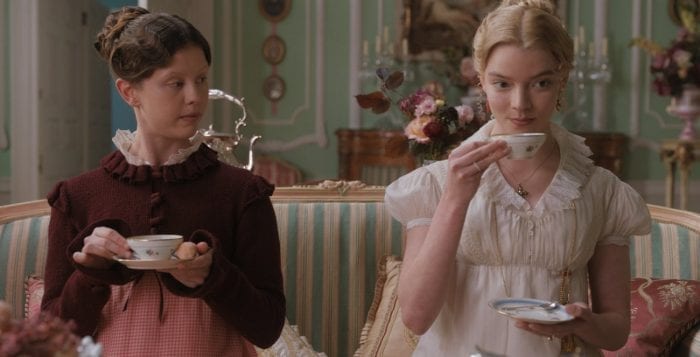OCEAN WATCHING:
Jay Gao of Stony Brook snapped this cool photo at McAllister County Park in Belle Terre with his Nikon D750 camera on Feb. 15
Send your Photo of the Week to [email protected]
OCEAN WATCHING:
Jay Gao of Stony Brook snapped this cool photo at McAllister County Park in Belle Terre with his Nikon D750 camera on Feb. 15
Send your Photo of the Week to [email protected]
By David Dunaief, M.D.

COVID-19, a strain of the coronavirus, is now a pandemic. I have been barraged with questions from patients, neighbors and friends. They are right to be asking questions, because there is not enough information being circulated about how to protect yourself and your family.
Key elements
The key weapons we have in this fight against COVID-19 are containment and mitigation. A lot has been shared about containment by the Centers for Disease Control. Containment is reducing the incidence of new cases to a goal of zero, thus flattening the prevalence curve so this virus is no longer infecting anyone. This requires social distancing, hand washing for at least 20 seconds, surface cleaning, and avoiding touching your eyes, nose and mouth (1). If you have not already, I encourage you to review the guidelines at www.cdc.gov/coronavirus.
There is less information being provided about how we can minimize the severity of the disease if we are infected. This is mitigation. Mitigation is about preparing ourselves, so we experience an asymptomatic or a mild form.
Who is most at risk?
According to a study focusing on Wuhan, China findings, people most at risk are those who have chronic diseases, with high blood pressure, diabetes and heart disease being the three most common (2). Also at risk are those who are “older,” that is 60 years or older, for they are more likely to have weakened immune systems and increased inflammation.
Managing your immune response
Ultimately, the goal is to have a healthy, appropriate immune system response. If the immune system “under-responds,” the virus’s symptoms will be more severe. Another term for this is immunocompromised.
If the immune system is overstimulated, your white blood cells are more likely to attack healthy tissue and cause further damage, exacerbating the situation. This sometimes happens after a heart attack, where the immune response is overzealous, targets healthy tissue and causes dysfunction in the heart. This process is called remodeling.
The goal is to create a healthy/strengthened immune system — not to boost and not to suppress the immune system. You want the “Goldilocks” of immune responses: not too little, not too much, but just right.
What can be done?
The best methodology here is to lean on what I call the four pillars of lifestyle modification: diet, exercise, stress management, and sleep.
Diet. By implementing a nutrient-dense, whole food plant-based (WFPB) diet or, more specifically, what I call a “Low Inflammatory Foods Everyday (LIFE) diet,” you can rapidly improve or even reverse these chronic diseases, decrease inflammation and strengthen your immune system, which will decrease your chances of dying from the virus.
The Lancet study referenced above found that inflammation and a weakened immune system were central to determining how people will do on entering the hospital.
What I’ve found with the LIFE diet in my practice is that people have white blood cells that are on the low end of the scale, between 2.5-4.5, rather than in the middle or upper range of 6.0-10.8. Typically, my patients’ white blood cells when they get sick stay within the normal range of 3.4-10.8. In fact., I had a patient who recently got a cold virus: their white blood cells were 3.4 before they got sick, and they rose to only 7.8, well within the normal range. This resulted in a targeted response with recovery in a very short time period.
For those with healthy immune systems, if they do get the coronavirus, their response will be more likely targeted instead of a disproportionately large response that starts killing the virus but also the healthy tissue in the lungs, leading to increased inflammation and fluid build-up in the lungs. Dr Fauci has warned this could potentially happen – what is called a cytokine storm – although the chances are very small. Ultimately, the immune system in these situations contributes to the problem, instead of helping.
So, what can you do to incorporate LIFE diet habits into your daily routine?
Focus on fresh and frozen fruits, vegetables and legumes. This is very important. With vegetables, the focus should be on dark green leafy vegetables, such as spinach, bok choy, kale, broccoli and cauliflower, as well as mushrooms. More is better. You cannot have too much. For fruits, apples have shown to play an important role in lung health, and all types of berries have high anti-inflammatory effects.
WFPB diets ultimately help with inflammation and immune strengthening and also support reduced stress and better sleep. The reason for these effects may have to do with the microbiome, the microbes living in your gut, which are an important determinant of how your immune system functions. Seventy percent of your immune cells are in your gut.
You can test for inflammation by looking at both white blood cell count and high sensitivity CRP (hsCRP). Beta carotene levels in the blood are a way to measure nutrient levels. I recently published a study that showed there is an inverse relationship between beta carotene in the blood and inflammation measured through hsCRP. This showed a 75 percent reduction in inflammation with higher beta carotene levels achieved through a plant-rich diet focusing on dark green leafy vegetables.
Interestingly, you don’t seem to achieve the same reduction in inflammation from vitamins or plant-based powders as you do by eating actual fruits and vegetables and legumes.
Stress management and exercise. Please, don’t panic. When you stress, your body releases cortisol, or internal steroids, that actually weaken the immune system and increase your risk of serious infection. Techniques to reduce your stress include exercise, yoga and meditation.
Mild to moderate exercise can be effective, such as a walk or jog outdoors or up and down the steps of your home. Just because the gyms may be closed in your area does not mean you can’t get exercise. It is spring, let’s take advantage of the weather, which will also help with mood and stress.
You can also exercise your lungs using an incentive spirometer. My personal favorite is the Triflo II version, but there are many on the market. I recommend taking 10 breaths using the incentive spirometer twice a day. This can help expand your lungs and keep the aveoli healthy and open. Aveoli exchange oxygen and carbon dioxide molecules to and from the bloodstream.
Sleep. Exercise will also help with sleep, as will the LIFE diet. Getting enough quality sleep is important to strengthening the immune system. Quality, not quantity, is most crucial.
What if you are infected?
If you are infected, supportive care is most critical: stay hydrated; focus on foods with fluids in them to help with this, like fruits, vegetables, and low-salt vegetable-based soups; and sleep.
Importantly, stay away from NSAIDS. These are mostly over-the-counter medications such as ibuprofen, naproxen and even aspirin, but can be prescriptions such as diclofenac. These suppress the immune system, thus making it more difficult for it to fight (3)(4). The mechanism of action for this suppression of the immune system is an anti-inflammatory effect that is different and detrimental, compared to the favorable anti-inflammatory effects of a WFPB diet such as the LIFE diet.
Instead, you want to reduce fever using acetaminophen, or Tylenol. This will not have any effects on inflammation, thus not interfering with the body’s immune system. If you can’t tolerate acetaminophen for fever, some alternatives may be elderflowers, catnip (which is a gentle choice for children), yarrow, white willow bark, echinacea, and lemon balm, although there is little data on their effectiveness.
Do not hesitate to go to the hospital if you have difficulty breathing, persistent pain or pressure in your chest, new confusion or an inability to get up, or bluish lips or face. These are signs of potentially severe and life-threatening COVID-19 symptoms.
To sum it all up, chronic diseases and not managing those four lifestyle pillars are risk factors for dying from COVID-19. You can improve or reverse your chronic diseases, as well as strengthen your immune system and reduce inflammation through a plant-rich dark green leafy vegetable diet like the LIFE diet
References:
(1) cdc.gov/coronavirus. (2) Lancet. Published online March 9, 2020. (3) Lung. 2017;195(2):201-8. (4) Chest. 2011;139(2):387-94
Dr. David Dunaief is a speaker, author and local lifestyle medicine physician focusing on the integration of medicine, nutrition, fitness and stress management. For further information, visit www.medicalcompassmd.com.

By Jeffrey Sanzel
Jane Austen’s 1815 novel Emma is a sardonic comedy of manners that swirls around issues of love, marriage and social status. While perhaps not as popular as Pride and Prejudice, it has seen multiple stage, screen and television adaptations, most notably with the Emmas of Gwyneth Paltrow, Kate Beckinsale and Alicia Silverstone (renamed Cher) in Clueless, which moved the action to 1990s California. While its mischievous wit is unmatchable, there is a real commentary about human nature that underlies its humor.
Directed by Autumn de Wilde, from a screenplay by Eleanor Catton, Emma. has arrived, complete with a full-stop at the end of its title. (This is to indicate it is a “period” piece.) It is lush and rich and comical, with just a hint of a modern sensibility to separate it from its predecessors.
Austen opens the novel with a description of her complicated heroine:
Emma Woodhouse, handsome, clever, and rich, with a comfortable home and happy disposition, seemed to unite some of the best blessings of existence; and had lived nearly twenty-one years in the world with very little to distress or vex her.
This tongue-in-cheek portrait sets up one of the most meddling characters in all of English literature. Following closely to the book, the film opens with Emma having just succeeded at matchmaking her governess. With a taste for this endeavor, she now sets her sites on marrying off her friend Harriet Smith, a simple girl who is easily swayed by Emma’s every suggestion. What follows is a series of courtships and broken engagements, mismatches and misunderstandings, almost all due to Emma’s destructive and misplaced interferences. Like most comedic novels of this nature, it ends happily with multiple pairings, marriage being the ultimate goal.
The film’s peripatetic beginning has an almost farcical feel. The scenes are short, clipped and over-the-top. There are a good many laughs but it takes at least 20 minutes to land for more than a few moments. Ultimately, this is an intentional device. As the film progresses, this whimsical conceit shifts to an earnestness that matches Emma’s maturity. From childishly frenetic to wisely focused, the film and its protagonist grow. The true turning point comes when an off-hand barb wounds deeply. Confronted for her behavior, she realizes that it is time to look beyond herself. It is amazing that as the film begins to breathe in its journey, it picks up momentum: It slows to go quickly.
The performances are uniformly excellent. Emma’s father, who is equally afraid of drafts as he is of being alone, is played with perfect understatement by the redoubtable Bill Nighy; with the simple raise of an eyebrow, he manages to steal every scene in which he appears. Callum Turner avoids the clichés as he finds dimension in the seemingly narcistic Frank Churchill. Chloe Pirrie as Emma’s sister and Oliver Chris as her brother-in-law are one of cinema’s most hilariously unhappy couples. Myra McFayden’s chatterbox of a Mrs. Bates reveals painful dimension in her humility. Rupert Graves as the jolly if slightly flustered Mr. Weston is matched by Gemma Whelan as his self-assured wife. Mia Goth hits the right notes of naivete as Harriet Smith, the unfortunate object of Emma’s machinations. Josh O’Connor and Tanya Reynolds are amusingly vulgar as the minister and his new bride. Amber Anderson does the best she can with the underwritten Jane Fairfax. Connor Swindells’ innocent gentleman farmer infuses his few moments with genuine sweetness.
At the center of the film is Anya Taylor-Joy, luminous and wholly engaging as Emma. Taylor-Joy manages to be both insufferable and charming at the outset and then finds a natural and touching shift to self-awareness, ultimately embracing her adulthood. Even in stillness, there is a sense of Emma’s ever whirring brain. Johnny Flynn’s George Knightley is appropriately wry and astute, the pain in his growing love for Emma becoming the film’s center.
Christopher Blauvelt’s sumptuous cinematography has made every frame a celebration of Regency England. The film is lavish and credit must be given to the design team: Kave Quinn (production design), Alice Sutton (art direction), Stella Fox (set decoration) and, especially, Alexandra Byrne (for flawless and Oscar-bait costume design).
This Emma. is wonderfully conceived and thoroughly entertaining. It is a reminder of why Jane Austen is a cinematic favorite and why her works — and insights — are still fresh 200 years later. Rated PG.
Winners have been announced for the first Friends of Caleb Smith Preserve photography contest, which began on Aug. 1, 2019 and ran through January of this year. There were 37 participants in the six-month-long contest, which focused on The Beauty of Caleb Smith State Park Preserve located at 581 W. Jericho Turnpike in Smithtown. Judges included three members of the friends group and a park official.
The contest was divided into two age groups: youth and adult (ages 18 or over). There were 22 contestants in the adult division and 15 in the youth division, most of whom were from Commack High School.
In the adult division Elizabeth Milward of Smithtown captured first place for “Reflection.” Second place was awarded to Katelynd Hill of East Meadow for “Goose Stretch” and third place went to Gerta Polgardy of Kings Park for “Barn.” Honorable mentions went to Tom Caruso of Smithtown for “Deer in Snow Storm,” and Sid Lorber of Smithtown for “A December Day at Caleb.”
Michela DiStefano of Commack High School won first place in the youth division for “Frozen Pond.” Second place was awarded to Miranda Gonzalez of Commack High School for “Emergence,” and Travis Maffei of Kings Park grabbed third place for “Ageless Beauty.” Russell Korn, of Commack High School, received an honorable mention for “Reflection.”
“The contest was an enjoyable experience as all the beautiful photos came in, and we’re looking forward to holding it again next year,” said Friends President Chris Duffner. Cash prizes of $100 will be awarded to each of the first-place winners, $50 to the second-place winners and $25 to the third-place winners.
A reception that was to be held at the park’s museum on March 15 has been canceled.
The winning photos will be on display throughout the month of March. For more information, call 631-265-1054 or email [email protected].
By Melissa Arnold

Regardless of gender, age or hobbies, just about all kids are surrounded by “stuff” — games, toys, dolls and LEGOs are perennial favorites. Joanne Cucinello’s granddaughter, Lia Paris, was no exception in her younger years, her childhood bed literally overflowing with stuffed animals. It’s a cherished memory for Cucinello, a longtime poet, storyteller and resident of Port Jefferson. In late January, she published “Lia Paris Sleeps in a Zoo,” an adorable book for children that explores little Lia’s vivid imagination and those of her stuffed friends.
Tell me a bit about your upbringing. Were you creative as a child?
I grew up in Brooklyn and Queens, and came from a family of five children. I wound up being the caretaker of my younger brothers and sisters, whom I love very much. I ended up having five children myself!
When I was younger, we didn’t have much money, and we learned how to create things out of nothing. All of us were very resourceful and creative. I loved reading and writing, and I always had a pencil in my hand.
When did you first start writing? Was it a part of your career?
I have probably 10 children’s stories that I’ve written so far, though this is the second one that I’ve published. I’m also a poet at heart — I’ve published a book of poems, and have a blog called “I See the Bridge” that I’ve been writing on since 2007.
My husband and I had a few hair salons, first in Queens and then out here in Suffolk County. I also grew up cooking beside my mother, and ended up starting my own small catering business. When my children were grown, I partnered with my daughter Lisa to open up Tiger Lily Cafe in Port Jefferson. We’ve been in business for more than 20 years.
What made you want to write for children?
I love all stories, but I especially enjoy fairy tales. I think they’re very important for children to listen to. Fairy tales can connect with a child on a very deep level. My first book, “Wanda the Wilopent,” is a fairy tale.

What inspired you to write this book? Is it based on a true story?
It seems like today children never have just one favorite toy. There’s always more being added. That was the case with my first granddaughter, Lia. She and her parents lived with us for the first year of her life, and so I was able to be closely involved with her as a baby. She was a very sensitive child and very imaginative. She refused to put her stuffed animals in the closet, saying that they would start to miss her and cry.
For a while, Lia and her younger sister, Simone, shared a bedroom. Eventually, her parents turned an office into a bedroom, allowing both girls to have their own room. It seemed that initially she was feeling lonely being the big sister in her own room. Relatives saw how much she enjoyed animals and her stuffed pig, so they began to bring her additional stuffed animals for her collection. Over time, she kept putting more and more of them on her bed, until there was no more room and she ultimately fell out of bed.
How does Lia Paris feel about having a book written about her?
Lia is 16 years old now, a wonderful human being. She’s been thrilled about the whole process from the beginning. Her little cousins, my grandchildren, are always asking if I’m going to be writing a story about them, too. I do have plans to bring them into stories in the future.
How did you go about getting published?
My first book was self-published, but this time I was published through Austin Macauley Publishers. They were accepting submissions, and I looked at the kind of books they were printing. While they didn’t have any fairy tales, they did have funny, touching stories about children and their life experiences. I had written “Lia Paris” years ago, when she was around 5 years old, and it was dear to my heart.
What about the illustrations?
Austin Macauley has its own illustration department. I sent them pictures from when Lia was young, along with sketches my niece helped me with. Lia actually has many of the stuffed animals from the story still in her closet, so she got them all out for us to photograph. It was a lot of work, but they did a great job.
Is there a particular lesson you’re trying to teach with this book?
I think there is a lesson in it for both parents and children, that more isn’t always better. Today, we always have to have the latest, greatest thing. And so much gets thrown out. It doesn’t have to be that way.
Who is the book’s target audience?
I think that it would be best for children ages 4 to 7, though younger children can certainly have their families read it to them.
Any more books on the horizon?
Yes, I have plenty of stories that I hope to publish in the future if this book does well. One story is called “My Name is Rainbow,” about a little girl who has a condition called heterochromia — her eyes are two different colors, and she often gets picked on by other children for it. It’s about learning to love yourself and celebrating the things that make you different.
Meet the author at a Spring Local Author event at BookHampton in East Hampton on April 19 at 10:30 a.m. and at a special Storytime event at Barnes and Noble in Lake Grove on April 25 at noon. “Lia Paris Sleeps in a Zoo” is available for purchase online at www.austinmacauley.com, Barnes & Noble and Amazon.
Over 300 children and their families shuffled into Emma S. Clark Memorial Library in Setauket during the school winter recess, Feb. 20, to enjoy the library’s 8th annual Take Your Child to the Library Day. Visitors enjoyed carnival games, face painting, temporary tattoos, balloon sculpting, crafts and more.
Photos courtesy of Emma Clark Library
By Fr. Francis Pizzarelli

It is already March, the temperatures are changing, the political rhetoric continues to intensify and the nation is now facing a new health crisis, the coronavirus.
In the midst of all of this, Christian communities around the world have begun their season of Lent, a time of inner reflection and pro activity to prepare those who believe in Jesus for Easter.
The beginning of the Lenten season is marked by the spiritual tattoo of ashes in the sign of the cross on one’s forehead. At that service, Christians are encouraged to consider three different ways to prepare for Christ’s death and resurrection.
The first recommendation is to find time in the midst of all of our chaos and craziness to pray, even if just a few moments, be consistent and do it every day during Lent. Not just the multiplication of words, or if you will, that give me God prayer but rather, use it as a time to listen to God speak to your heart.
The second recommendation is almsgiving; traditionally understood from a biblical perspective to give money to the poor. The focus of this recommendation is upon generosity of spirit — that the giving doesn’t have to be about money but it also can be about giving your time and your talent to others.
In simple terms, volunteer in a soup kitchen or a shelter for the homeless. Po’ Boy Brewery in Port Jefferson Station collected blessing bags for the poor and dropped them off at a local homeless shelter. Most of us reading this column could commit to bringing canned goods and other non-perishable foods to a local church or synagogue for the poor and needy on a regular basis -— that is genuine almsgiving.
The third recommendation is fasting. For many Christians, it’s the yearly opportunity to go on a diet, give up all kinds of foods that we like and by the next day break every resolution we made.
Genuine fasting is supposed to be about changing an attitude or behavior that blocks us from fully loving and forgiving one another unconditionally. I don’t think it should be a practice only embraced by Christians during Lent but rather a practice all caring human beings should consider embracing all year long as we all try to make the world a better place.
This particular recommendation might be appropriate for all of our elected officials to consider. How about for 40 days, everyone who leads us fast from name-calling, from rude and disrespectful comments, from lying and misrepresenting the truth and from being judgmental?
As many of you know, I live with 62 people in the early stages of recovery hoping for wellness. At our Lenten service this year, I suggested in regards to fasting that they consider a couple of things: how about fasting from the F curse, how about fasting from blaming everyone and their brother for your addictive behavior, how about fasting from anger and the poor me pity party?
It’s only been two weeks … but hope springs eternal!
Fr. Pizzarelli, SMM, LCSW-R, ACSW, DCSW, is the director of Hope House Ministries in Port Jefferson.
‘Art is my passion and lifetime adventure;
I relish being able to dedicate each and every day to the art of creating.’
– Angela Stratton
By Irene Ruddock

Angela Stratton, whose artistry is described as traditional realism, was schooled in the old master’s tradition at the Reilly League of Artists. She was mentored by Cesare Borgia who strongly emphasized portrait and figure drawing, painting from life, working from casts, and copying old masters such as Velazquez, Vermeer, Rembrandt and Rubens.
After over twenty years of study, Ms. Stratton was asked to supplement Borgia’s teaching responsibilities and has since emerged as an award-winning artist who has exhibited country-wide. Today, she belongs to numerous organizations such as the Catherine Lorillard Wolf Art Club, the Portrait Society of America, the Salmagundi Club, and the Oil Painters of America. She continues to teach and to seek continuous study through workshops, demonstrations, and museum lecture series.
I recently caught up with the artist to get her views on her prestigious career.
Was there a defining moment when you decided to follow the path of traditional realism?
Yes. I did draw as a child, but my true inspiration came in my early years of employment at the Metropolitan Museum of Art, wandering the great rooms intrigued by the old master paintings. It was there that I decided to become an artist.
What do you remember most about the influence of your mentor Cesare Borgia?
He had so such love and enthusiasm for art that it became contagious. But I mostly remember his encouraging me to persevere and to pursue research. He encouraged me to develop my own style and to “be true to myself.” Through the years, I developed a such a strong bond with him and his wife Margy, that she told me I was the daughter they never had. Many years later, I painted her portrait and gave it the title ‘Beautiful Spirit’ as she was truly deserving of that title.
What artists do you especially admire?
That is difficult to answer as there are so many great artists with different styles who make each one unique. One of my favorites is John Singer Sargent, whose fluid strokes helped make him the leading portrait painter of his generation. He is often known for his scandalous painting of Madame X. I also admire William A. Bouguereau for his superb draftsmanship and classical paintings of the female form. His painting of the “Birth of Venus” is often described as the epitome of classical Green and Roman form of the female body.
You have a wide range of paintings which depict landscapes, portraiture and still life. Which are you most well known for?
I have always been known for my portraiture and figures, but since retiring, I have been able to put more focus on still life and plein air painting as well. However, portraiture is still my favorite. As people we are all so different and yet so much alike. We all possess a magnificent spirit inside us. I hope to capture that essence whether in a child’s eye or an elderly smile. I enjoy doing commissions and strive to find the magic in each person.
How do you choose your objects for your still lifes such as the ones in your well known painting Life’s Phases?
Each object in the painting tells a bit about the phases of my life from my childhood love of ice skating, to my toy and doll phase, and to the years when I discovered baseball. When I do still life commissions, I encourage people to bring symbols of their life so I can paint the objects that tell a story representing them in a unique way. In this way, a person can create their own painting.
In today’s world of abstract, contemporary design, do you think the realistic tradition will survive?
I do not think realism will ever disappear with so many museums abundantly displaying wonderful traditional art. Even today there are many art organizations and magazines that continue to emphasize the realistic tradition.
Are students lacking today if they are not taught a rigorous classic background?
My belief is that some study on basic drawing techniques are vital regardless of one’s direction. ‘You need to know the rules before you can break them’!
What awards have meant the most to you?
All awards are special, but I do remember being extremely excited when I was accepted as a finalist into the 2015 International Art Renewal Center, which is the largest, most prestigious realist art competition in the world.
Do you have a favorite painting?
I remember once, while at the Met, I was asked if I needed to rescue one painting, which one would it be? I chose “The Wyndham Sisters” which was painted in 1899 by John Singer Sargent. One cannot help but to be in awe of such a masterpiece which was dubbed “The Three Graces” by the Prince of Wales.
Where do you exhibit now?
I am currently exhibiting in the Annual Invitational Exhibition at The Atelier at Flowerfield in St. James, Figuratively Speaking at the Salmagundi Club in New York City and The Big Picture at the Art League of Long Island located in Dix Hills. I encourage people to visit my website at strattongallery.com.

L.I. Against Domestic Violence recently received a $9,000 Community Partner grant from United Way of Long Island.
The funding will support education and prevention programs for at-risk youth and community members of Suffolk County, as well as provide self-sufficiency and health resources for the survivors the agency serves.
“LIADV is very grateful to be a community partner with the United Way and to benefit from the generosity of donors. This funding allows us to reach youth, giving them tools to make healthy relationship choices. The program is vital to ending relationship violence,” said Colleen Merlo, executive director of L.I. Against Domestic Violence.
“We couldn’t do the work that we do without our community partner agencies and the contributions they make to the residents of Long Island,” said Theresa A. Regnante, president and CEO of United Way of Long Island. “By providing funding to these organizations, it shows that they meet the highest standards of excellence in the not-for-profit sector.”
To learn more about L.I. Against Domestic Violence, visit www.liadv.org.
Croxley’s Ale House, 155 W. Main St. in Smithtown has closed its doors. The announcement was made on the restaurant’s Facebook page on Feb. 20. “Regretfully, after ten wonderful years, Croxley’s Smithtown has closed its doors. We are very grateful to our amazing staff and our loyal customers. We hope to one day return to this great town but until then we look forward to serving you at our other locations.” The restaurant, which opened in 2012, featured a beer garden and specialized in German beers and dishes. Remaining locations include Farmingdale, Rockville Centre, Franklin Square and Brooklyn.
